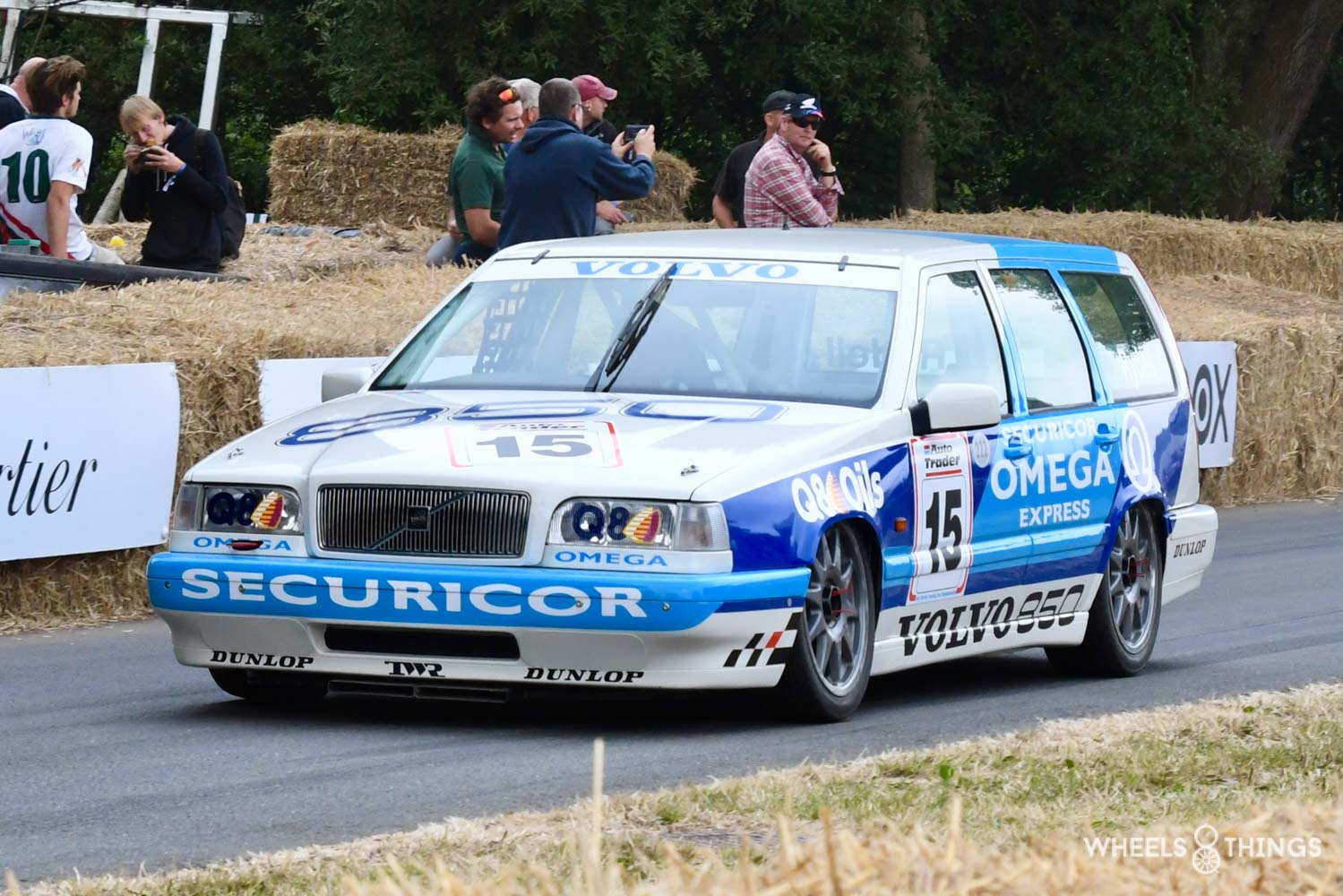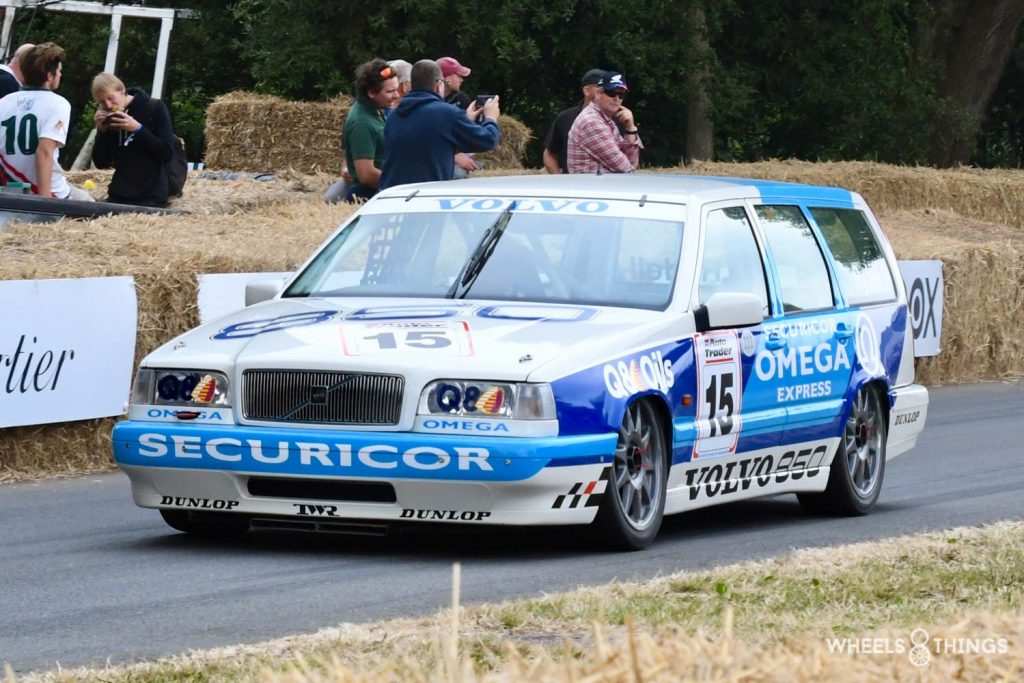
Last week you could read an article in this blog about the Volvo P1800 S and its spiritual successor. We now continue with the Volvo brand and go back to 1994 when hybrid and electric cars were not yet available.
Volvo made its debut in the British Touring Car Championship ( BTCC ) that year with its 850 Estate Super Tourer. A break model in motor racing? Yes, at Volvo they thought it was possible! We came across one of them at the 2018 Goodwood Festival of Speed. And whether you wanted to or not, you could hardly look away from it.
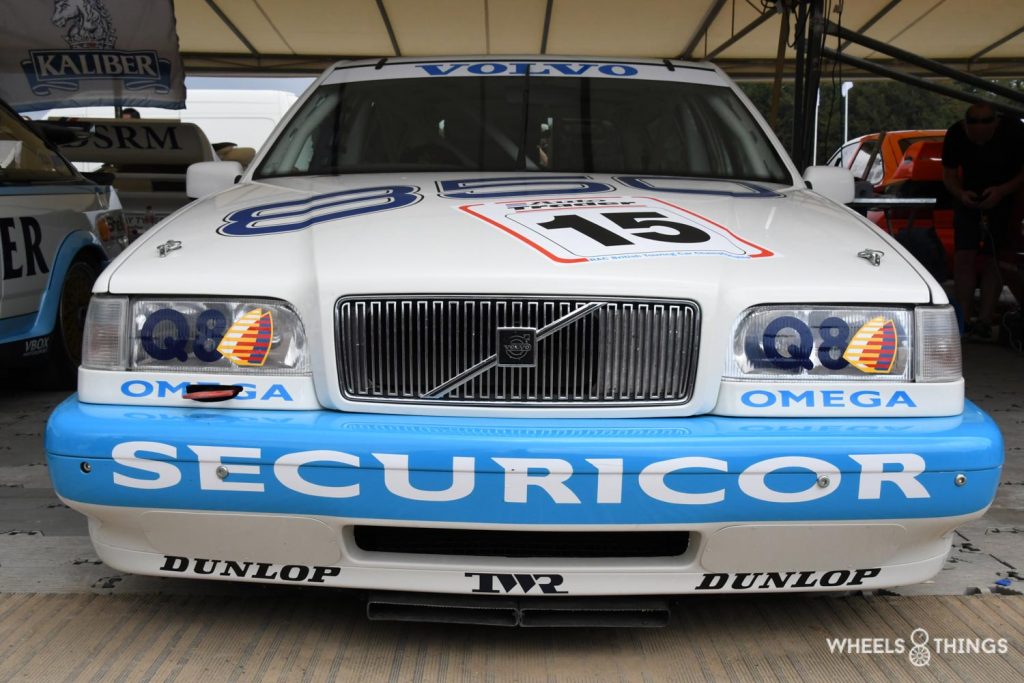
The organisers of the BTCC decide that from 1991 only atmospheric engines with a maximum engine capacity of 2 litres will be allowed. This means the end of the Group A formula with turbo engines and the dominance of the Ford Sierra Cosworth. They hope this will bring more excitement to their races. The Sierra is replaced by a Mondeo and also Vauxhall ( Opel Vectra ), Toyota ( Carina ) and Nissan ( Primera ) are signing up for this new formula. BMW continues with its “old” M3 E30. They just put in a 2 litre variant of their S14 M engine as it was offered in Italy, in their 320Si model, and at the end of the year, with Will Hoy, they also deliver the 1991 champion. The organisers’ plan is a success. The races are exciting and spectacular and at times even legendary. The BBC provides, the week after each race, a summary with the sublime commentary by the recently deceased Murray Walker. And that was real motorsport top TV! The high lords of the FIA in Paris have also noticed this success formula and decide to take over the basis of the English BTCC standards for a new series that will come into force from 1993: the 2 Litre Super Tourer Championship. The regulations are drawn up in such a way that most car manufacturers have a model that can compete. The limitation to 2 litres makes them popular and large volume models, ideal as a promotional tool for a brand that wants to sell cars. From now on, the bodies do have to have four doors. BMW has to replace its coupé model with the Berlin variant. The 2 litre Super Tourers were an instant success. The BTCC adopted the FIA rules and races and championships were started in other countries as well. The rules are identical all over the world and this ensures that teams with a car from the BTCC can participate in e.g. Japan, Australia or Italy without having to adapt their car. The success is so great that other brands also become interested. Renault had a Laguna developed and built by the Williams Formula 1 team, Alfa Romeo and Audi built their cars themselves and had real factory teams. Audi provided the first and only four-wheel drive car in this class.
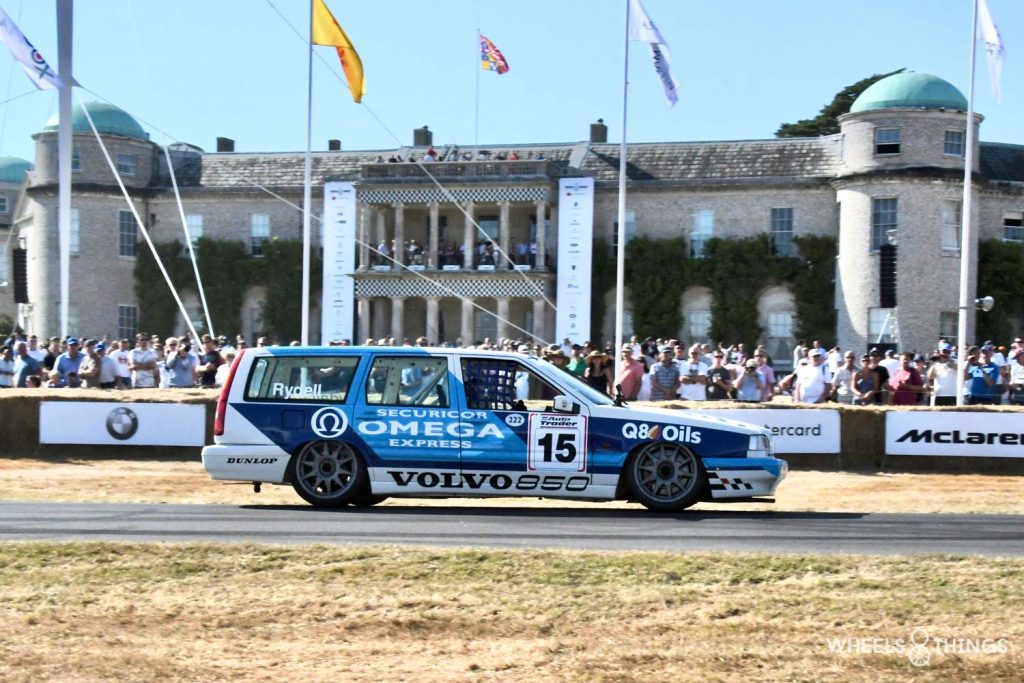
In Gothenburg, Sweden, Volvo is also interested in this formula. Just one problem: Volvo does not have its own racing division. It makes solid passenger cars, trucks, cranes and heavy yard vehicles. Not really race material! With a few exceptions, there have been very few racing Volvo cars. It is only much later in 2015 that Volvo takes over a private race team called Polestar ( where have we heard that name before ? ) to prepare Volvo’s of the type S60 for participation mainly in the Swedish and WTCC world championships. In 1993 this is not yet the case and they have to look for a valid partner. They wanted to have a racing version of their recently released 850 model built and gave this assignment to the Swedish preparer SAM. Before building the prototype, they asked SAM to come to the factory to collect a bodywork that did not meet the tolerances for a customer vehicle. There, it transpires that there is only one bodywork available at the time, an estate, as they call it at Volvo. So as not to lose any time, this chassis is used for the test car. It was so well received by the big bosses that they decided to continue with it for the final race cars. However, SAM was thanked for its services and, after some searching, Volvo ended up with the English company TWR. Yes, that’s the one for the Mazda RX7 and the Group C Jaguars. The Jaguar Group C programme was discontinued in early 1993, after the 24 hours of Daytona, after 9 years. Tom Walkinshaw immediately understood that a partnership with another major car manufacturer would be a godsend for his team.
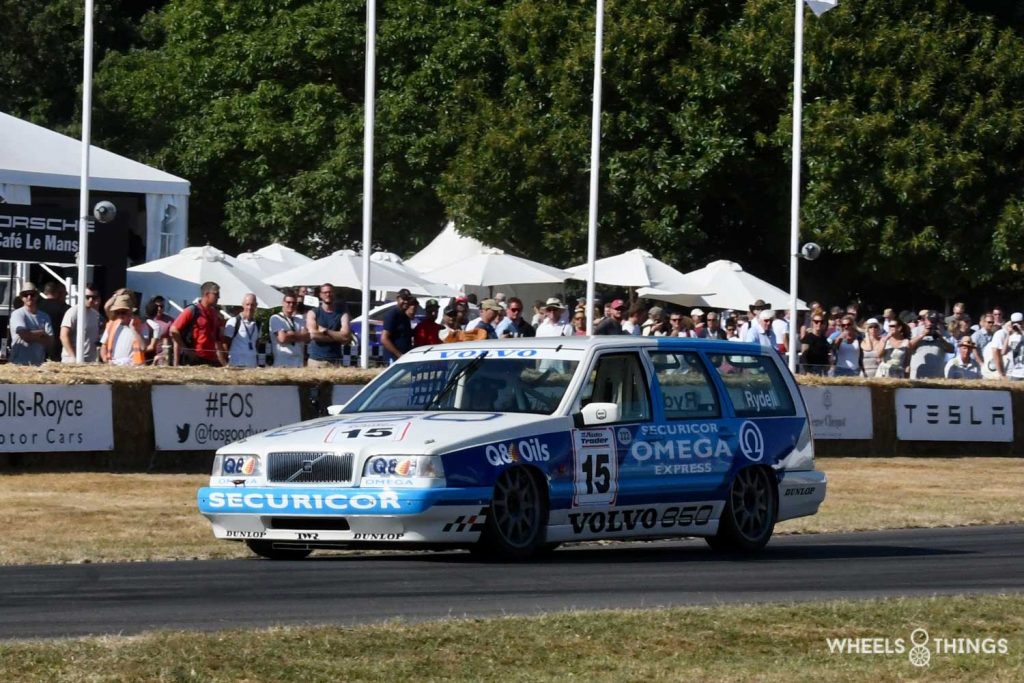
Tom Walkinshaw was given carte blanche by Volvo and a huge budget to start the programme and develop the car. The 850 model chosen was a very solid and safe middle-class car, like most Volvo cars at the time. A racing car? It is not really. It is also the first Volvo with front-wheel drive. The angular shape certainly retains the link with earlier Volvo cars. On the large bodywork, however, there is plenty of room for publicity. It is not an easy task for TWR but Volvo is counting on the years of experience of the successful English team. The achieved BTCC titles, European Touring Car Championship, multiple World Champion Group C, and victories in the 24 hours of Daytona and twice the 24 hours of Le Mans are a fine showcase for TWR.
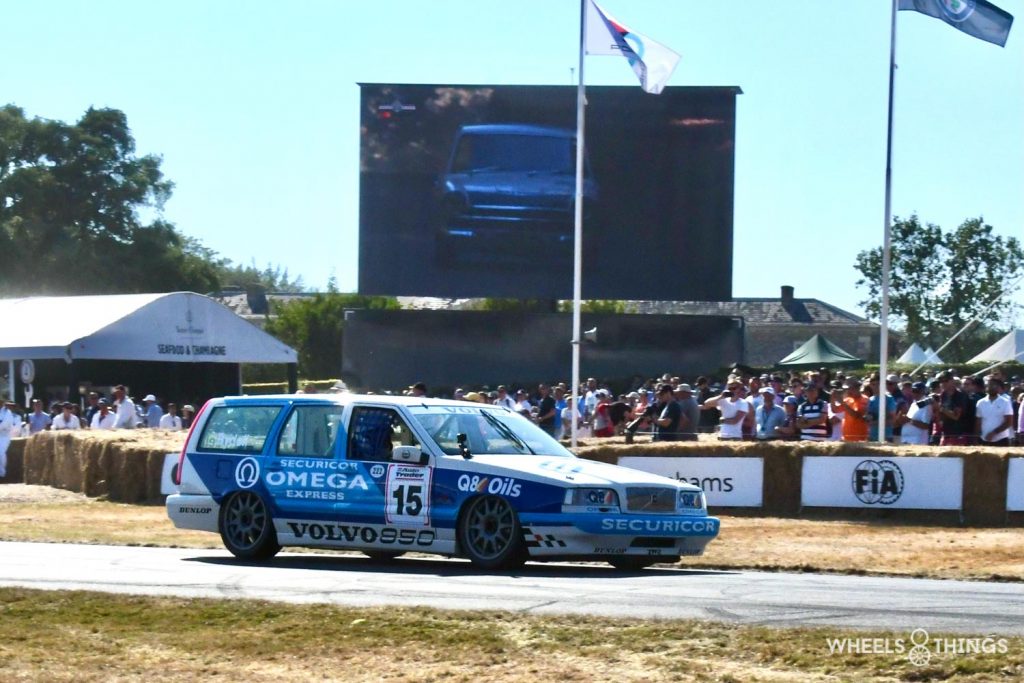
Pilots on duty are the Dutch ex F1 pilot Jan Lammers and the almost obligatory Swede Rickard Rydell. The debut year of 1994 did not go as well as expected. Of course, all beginnings are difficult and there is always a period of teething troubles. A Volvo 850 Estate Supertourer is a completely different car than the Group C Jaguars they were used to at TWR. There are also some differences on the engine level: the Volvo engine produces 30 to 40 horsepower less than its competitors. This of course has to be solved. The 850 can occasionally achieve a top 10 position with a fifth place as the best result. The fellow drivers are not happy with the “fat” Volvo. The big bodywork obstructs the view to the front and the Volvo drivers often get in the way because of their lower speed. The Estate soon gets some nicknames like “tank”, “van” and “breadvan”. But gaining experience before 1995 is the message. Unfortunately for Volvo, the Estate will only be used for one year. A discussion about the use of spoilers forces the FIA to intervene and change the regulations. At the start in 1993 it was agreed that the constructors would not homologate spoilers and wings on their cars. The men with the letter A apparently did not understand this and Alfa Romeo and Audi appeared in 1994 with these applications on their cars. The extra advantage of more downward pressure and speed was enormous. BMW reacted very quickly by building 2500 cars in two months and homologating its 318is, which was fitted with the front spoiler and boot wing of the M3. Other brands do not have this option and all plummet to the bottom of the results table. Of course, grumbling ensues and the FIA reacts by allowing, from 1995 onwards, a front and rear spoiler for all participating cars. For the Volvo, this is a problem because the rear spoiler has to be on the boot lid. They were therefore forced to switch to the saloon version of the 850. This was a lot more competitive than the Estate, evolving into a race winner but unable to win the BTCC title. Its successor, the S40, would achieve this in 1998 with Rickard Rydell at the wheel. It will be the only BTCC title for a TWR Volvo.
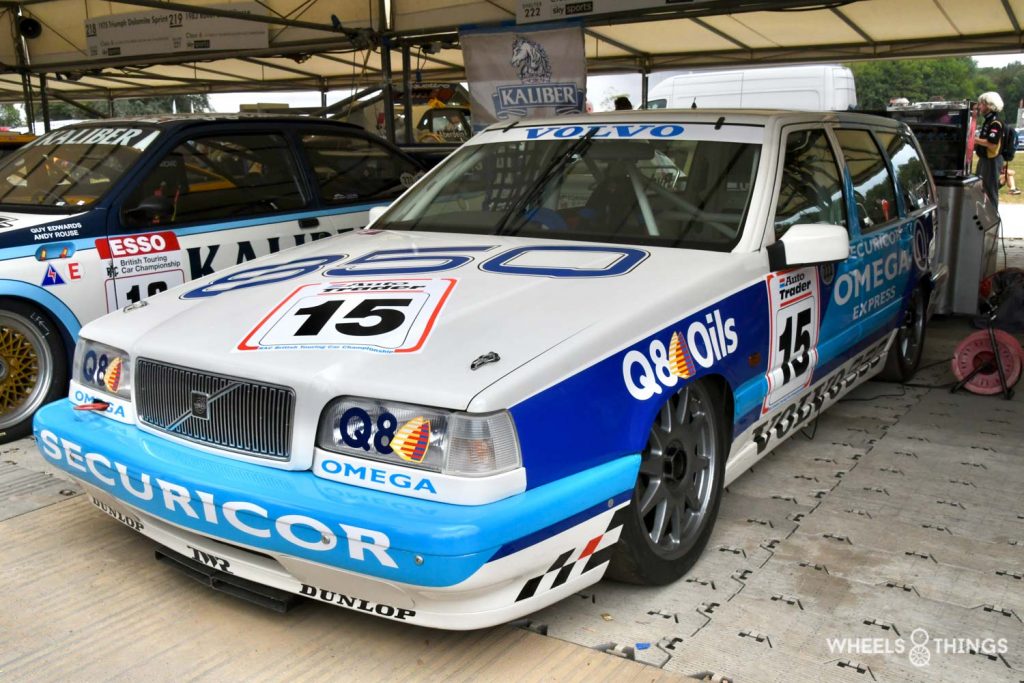
But even with the victories of the 850 Berline or the championship title of the S40, neither would ever reach the status of the 1994 850 Estate BTCC. The publicity stunt was so successful that even after more than 25 years, for many motorsport and Volk fans the Estate has become the most remembered Volvo racing car ever. Proof of this are the multiple replicas that compete in various historic championships. The combination would not have worked with any other brand, but it did with Volvo. It was a perfect match and the 850 Estate became a true maverick in motorsports!
Report & photos: Joris De Cock
